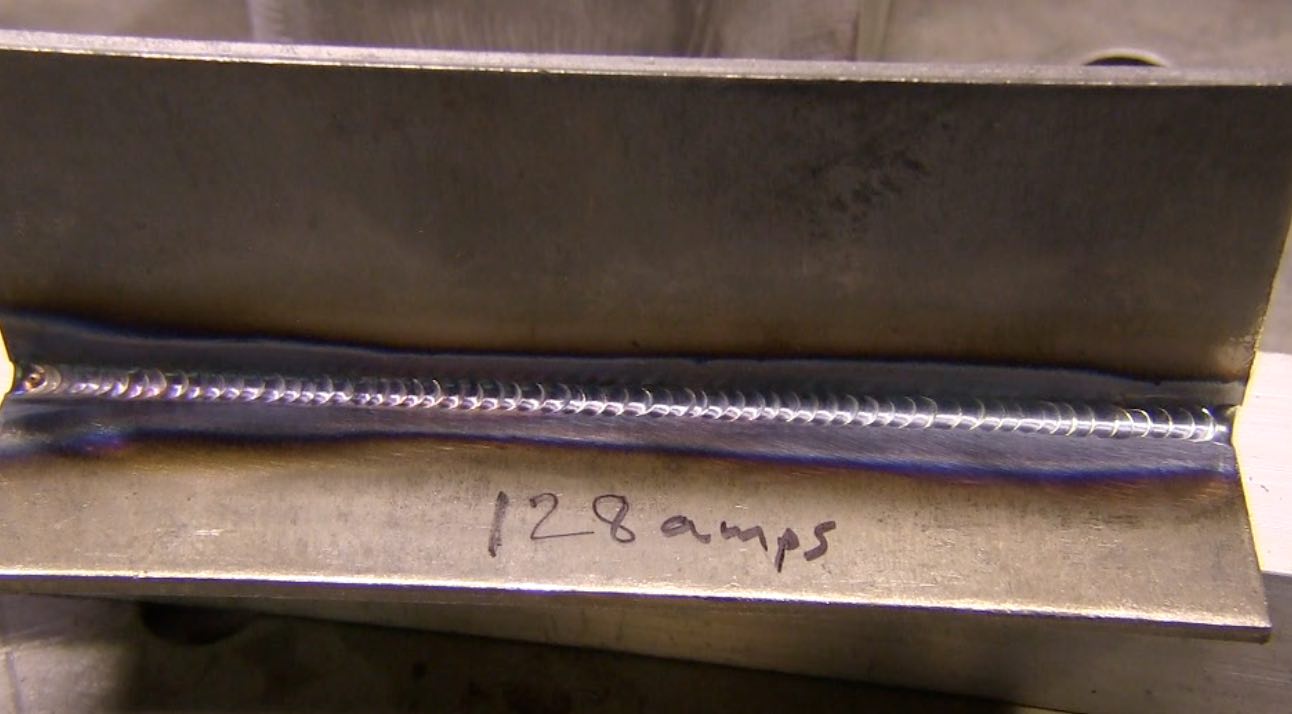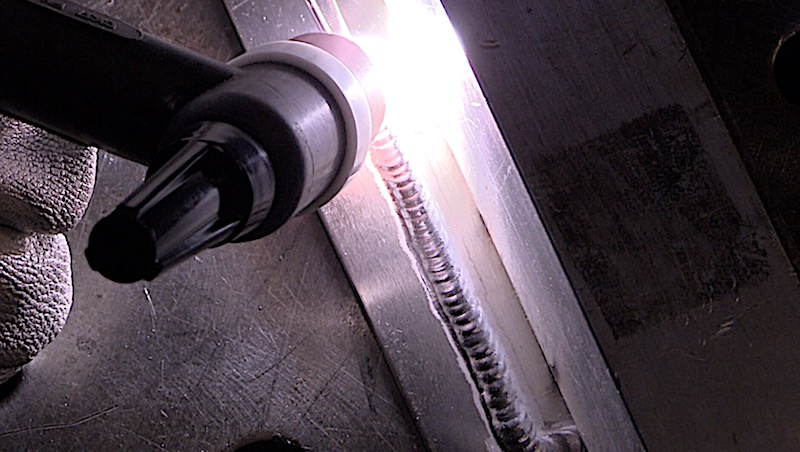How To Set Tig Welding Machine
Tig Welder Settings Made Simpler...one stop store

Run across Hundreds of Quick 30 second videos showing TIG welder settings for all types of Welds
TIG Welder inverters accept a bunch of settings and if you don't understand what they do, y'all will never go the nigh out of your inverter tig welding machine.
I take a friend who just had an opportunity to buy a big "sometime every bit balls" Miller 330 ABP for nearly 500 bucks. Those old things are Cadillac tig welders but the problem is the darn matter is as big every bit a refrigerator and weighs well-nigh 900 pounds.
No matter how sweet it welds, or how sweet the bargain is, if you lot are cramped for space, dont have acceptable power service for a 100 amp breaker, and don't have room for a refrigerator sized welder in your garage, its not a very practiced deal.
That's were tig inverters come in.
With inverter technology, we can take a 300 amp automobile that tin easily be carried past one person or wheeled around the shop on a light duty cart.
And the actually slap-up matter about tig inverters is that the arc can exist tweaked to your liking.
But only if you understand what all those freakin knobs are for.
And then let's talk about the main tig welding inverter settings. Some of the settings that y'all need to really become a handle on are:

• Amperage—pretty straightforward...but there is a unproblematic rule of thumb that holds truthful up to near .125" thick metal. (3.2mm)...mainly carbon steel
one amp per one thousandths (thats about 40 amps per mm)
A lilliputian more than than one amp for aluminum
A little less than one amp for stainless
once you get thicker than .125" the 1 amp rule starts to drift and not piece of work equally well

• A/C frequency—power from the power company is roughly 60hz in the United states and 50 hz in some countries. An inverter steps the frequency of the incoming Air-conditioning power up before information technology even converts it to DC.
That'due south why the transformer is and so modest light compared to an sometime tig welder…the A/C frequency knob allows you to weld with a much higher frequency.(HZ)
A higher HZ frequency setting stiffens and focuses the tig welding arc..pinpoints the rut more..and sometimes that's a very good thing…like when yous need to put one driblet of filler metallic on a pit in an aluminum injection mold. or when you need to weld near threads and you don't desire to arc off and damage the theads.
rule of thumb here is lower frequency for thicker aluminum and higher frequency settings for thinner aluminum...just in that location are ever exceptions.
• A/C balance—Alternating current contains both electrode positive and electrode negative irresolute rapidly back and forth.
With Quondam schoolhouse machines, you become what y'all get and roughly 55 /45 dcep/dcen due to something called rectification (ouch that sounds painful)…and you don't always need all that cleaning action that you get from the dcep side.
Only with most modernistic tig inverters, you tin can conform the ac residual to more than 90 % dcen.
Rule of thumb: for nasty aluminum similar a boat prop that has some corrosion, adapt the ac balcne to where you use more dcep .
For make new clean aluminum diamond plate, set up the ac balance to where you have around 67-75 per centum dcen.
Merely some brands of tig welders accept their AC balance knob where the higher number setting indicaties more cleaning so if y'all set the Air-conditioning balance knob high and your tip of your electrode melts, attempt a much lower setting.
• 2t ---for using a switch on the torch handle…when yous plug in the pes pedal or torch amperage control, well-nigh tig inverters are designed to featherbed the 2t and 4t settings because the amperage control overrides all the upslope and downslope stuff.
The 2t setting pretty much turns the torch switch into a 2 position switch. Press the switch , you go and arc. Let off the switch, arc goes out.
uplsope and downslope tin be set up to taper upwards and down using 2t or 4t function
• 4t—the 4t position is most always used in conjuction with upslope and downslope settings…something like this…
o press the button and you get an arc.
o Let off the button and the arc upslopes to any the main aperage is set to
o Weld
o Press the push button and arc downslopes to lower amperage
o Let off the button and arc quits.
o Some machines are different merely this is the full general principle of 4t operation
• Tig loftier freq vs lift arc vs scratch start---tig high frequency lets you lot starting time the arc without touching off…the elevator arc function lets yous weld without high frequency if that's important to you like if you lot are welding in an air traffic control tower….scratch beginning is basically the stick setting. If you are used to a plain jane dry rig, y'all might use scratch get-go.
• Pre-flow—the length of time the torch gas flows betwixt the fourth dimension you lot press the switch or remote pes pedal, and when you actually get an arc. No need to have more than 0.5 or ½ of 2nd.
• Post-catamenia-- the length of time the torch gas flows later on the arc terminates.
• Up slope—allows the electric current to climb at whatever charge per unit you set…from start amperage to operating principal amperage setting on the machine
• Down slope—allows the current to decrease at whatever charge per unit you lot set on the knob then that you wont leave a defect like a fish middle or crater crack
• Start amps —allows for a actually low amperage startup or a hot one
• End amps—determines the final amperage before the arc quits
• Pulse frequency---pps or pulses per 2nd…yous might recall that once you get above xxx pps it would be like no pulse at all…you lot would exist wrong. Higher pulse rates really focus the arc.
• Pulse percent of background current or peak pulse percentage—lets you control the effect of pulse to limit heat input or just to agitate the puddle.
• Pulse % on time also called pulse width—the time the high pulse amperage stays on
Dang! Anything else!!??
exit tig welder inverter setting and see more than tig welding tips
How To Set Tig Welding Machine,
Source: https://www.weldingtipsandtricks.com/tig-welder-settings.html
Posted by: sanchezonjusy00.blogspot.com


0 Response to "How To Set Tig Welding Machine"
Post a Comment